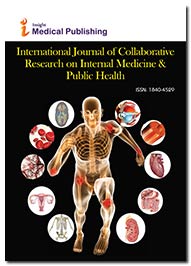Abstract
Prevalence and clinical manifestations of rotavirus diarrhea in children of rural area of Thailand
Introduction/ Background: Rotavirus diarrhoea is a leading cause of child death. It is a major concern in emerging nations. Many studies and analysis were executed for genetic assessment of rotavirus, however, very few studies from Thailand focused on clinical manifestation.
Aim: To estimate the prevalence and clinical manifestations of rotavirus diarrhoea among children of Ongkaluck district, Nakorn Nayok rural area of Thailand.
Method: Children aged ≤ 7 with acute diarrhoea as presenting symptom during January 2008 to October 2008 were enrolled in the study. Demographic data, clinical manifestation, vital parameters, laboratory investigation of blood, urine and stool were examined. Clinical signs of dehydration were graded as per WHO scale. Stool examination for rotavirus was tested with immunochromatography assay.
Results: By executing statistical analysis, results were observed among 56 enrolled children 37 % (n=21) had been diagnosed as rotavirus positive. Rotavirus positive children had moderate to severe dehydration (42.9 % vs 11 %, p-value = 0.01), vomiting as presenting symptom (92.2 % vs 68.8 %, p-value = 0.02) and absence of fever (38.1 % vs 68.6 %, p-value= 0.03) compared to non-rotavirus group respectively. The odds ratio of being rotavirus diarrhoea was increased 10.8 fold (95% CI 1.2 to 97.4; p-value = 0.03) provided children had vomiting. Rotavirus positive children were prone to develop hypokalemia (pvalue= 0.04), acidosis (p-value < 0.001), loss of bicarbonate (p-value < 0.001) and higher blood urea nitrogen (p-value = 0.02) than non-rotavirus group. Children with rotavirus diarrhoea had neutrophilia and less WBC in stool sample compared to Non-rotavirus acute diarrhoea group.
Conclusion: Children admitted to the hospital, with moderate dehydration, absence of fever and vomiting as presenting symptoms are more prone to have rotavirus infection.
Author(s): Sanguansak Rerksuppaphol , Lakkana Rerksuppaphol
Abstract | Full-Text | PDF
Share this

Abstracted/Indexed in
- Google Scholar
- Genamics JournalSeek
- CiteFactor
- Directory of Research Journal Indexing (DRJI)
- WorldCat
- Proquest Summons
- Secret Search Engine Labs
Open Access Journals
- Aquaculture & Veterinary Science
- Chemistry & Chemical Sciences
- Clinical Sciences
- Engineering
- General Science
- Genetics & Molecular Biology
- Health Care & Nursing
- Immunology & Microbiology
- Materials Science
- Mathematics & Physics
- Medical Sciences
- Neurology & Psychiatry
- Oncology & Cancer Science
- Pharmaceutical Sciences

